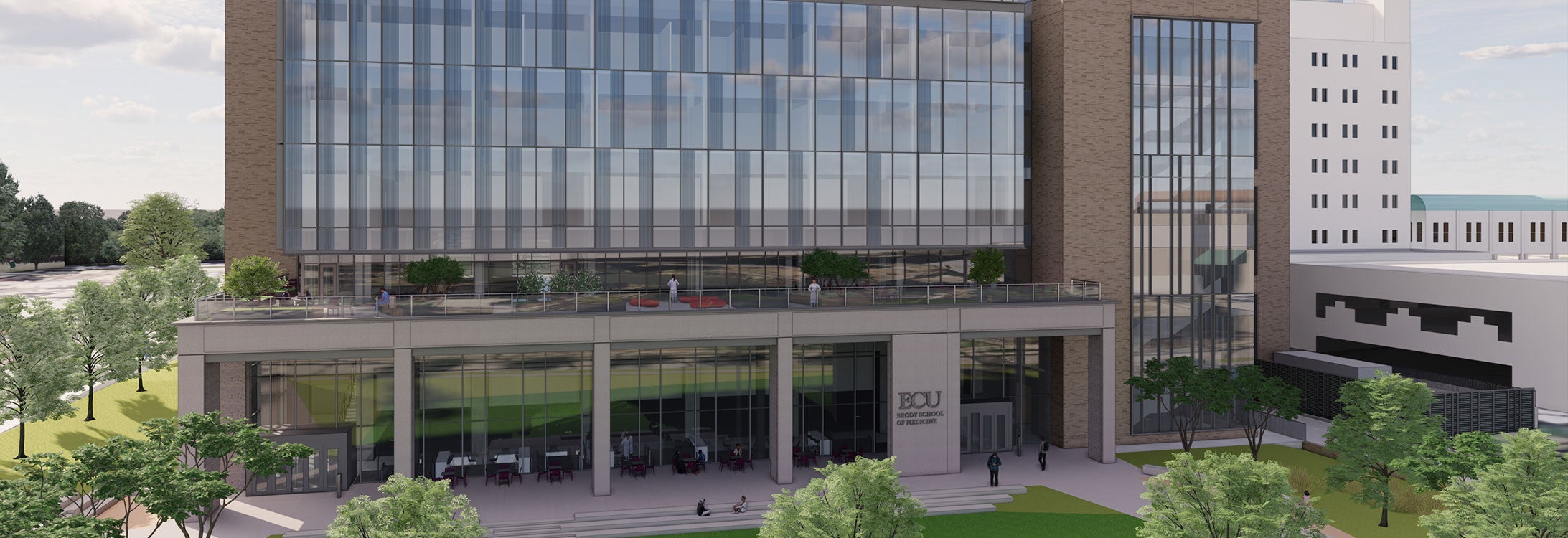Brody School of Medicine students are choosing primary care in rural settings. Here’s why.
The Brody School of Medicine at East Carolina University is among the country’s top-rated medical schools. The school and ECU Health, eastern North Carolina’s largest hospital system, share a vision of building the national model for rural academic health and wellness. A few recent events affirm my belief that we are well on our way to realizing it.
By Dean Michael Waldrum, MD, MSc, MBA.
This year’s Match Day, when our graduating medical students discover which teaching hospital or health system will sponsor their residency, convinced me that our students share this vision, too. More than half of them chose to match in primary care — family medicine, internal medicine, pediatrics and OB-GYN. And while these numbers are always significant, the percentage of students staying right here in the east at ECU Health Medical Center, one of the nation’s largest teaching hospitals, was the highest it has ever been — 20.6%.
In addition, the Rural Family Medicine Residency Program filled all of its available positions. This three-year program, which began in 2021, places entering residents at the medical center for their first year before moving them to federally qualified health centers in rural counties in eastern North Carolina, giving new physicians critical, unique experiences needed for medical excellence in communities with the highest need for excellent care.
To reiterate, more than half of the class matched in primary care. This is significant for a number of reasons because primary care is not often compensated at the level of specialties and subspecialties. This results in students steering away from primary care, particularly in rural settings. With these factors in mind, the Brody School has established strategies to address these challenges.
By the numbers: Highlighting the value of our school and ECU Health
The median cost to attend a four-year medical school in the United States is $286,454 for public schools and $390,848 for private schools, according to the American Association of Medical Colleges (AAMC). With median debt hovering around $200,000, it’s a burden nearly all students bear, and for many, there’s a quick calculus that lightens the load — picking a well-compensated specialty that will wipe away debt in just a few years. These are the realities and decisions our medical students face. Many have told me they would prefer primary care if only they could afford it.
 In the latest Financial Aid Summary Report from the AAMC, the Brody School landed in the top 10% for affordability among fourth-year students nationwide and the top 20% for years one through three. Nearly 85% of our students graduate with debt that falls below $149,000, and some have no debt at all. One of the programs designed to offset these educational costs is the Brody Scholars program. It is the only one of its kind in North Carolina that is based entirely on merit and covers these select students’ tuition and fees and most living expenses.
In the latest Financial Aid Summary Report from the AAMC, the Brody School landed in the top 10% for affordability among fourth-year students nationwide and the top 20% for years one through three. Nearly 85% of our students graduate with debt that falls below $149,000, and some have no debt at all. One of the programs designed to offset these educational costs is the Brody Scholars program. It is the only one of its kind in North Carolina that is based entirely on merit and covers these select students’ tuition and fees and most living expenses.
These numbers and data are important for understanding why our school is the highest value medical school in the country. Combine this with the work of ECU Health in making state-of-the-art care more accessible for patients, and the vision and strategy become clear. In order for our combined efforts to solve the unique challenges of providing excellent rural health care, we must work on the front end to make the burden of four-year medical school debt low. Only then can we enjoy ample retention by filling slots in more than three dozen medical residencies and fellowships here at ECU Health that make it easy to imagine practicing at home in eastern North Carolina.
Looking ahead
We are being recognized for this work. In 2021, North Carolina’s General Assembly approved funds to build the seven-story, 195,000-square-foot Center for Medical Education Building, the first major expansion of the school since the early 1980s when it opened. This project will modernize our educational environment and increase incoming class sizes to 120 students (with a total capacity for many more).
It’s a historic investment in the east and in our state, and it was made possible by a collaborative spirit between East Carolina University and ECU Health, our students and clinical faculty, and our regional leaders and state elected officials. Those officials can take pride in what they are helping accomplish and believe that we will continue to move together to solve problems and deliver on our mission — meeting the needs of patients by creating a model for rural health care nationally.


Mike Waldrum, MD, MSc, MBA
Chief Executive Officer, ECU Health
Dean, Brody School of Medicine at East Carolina University
